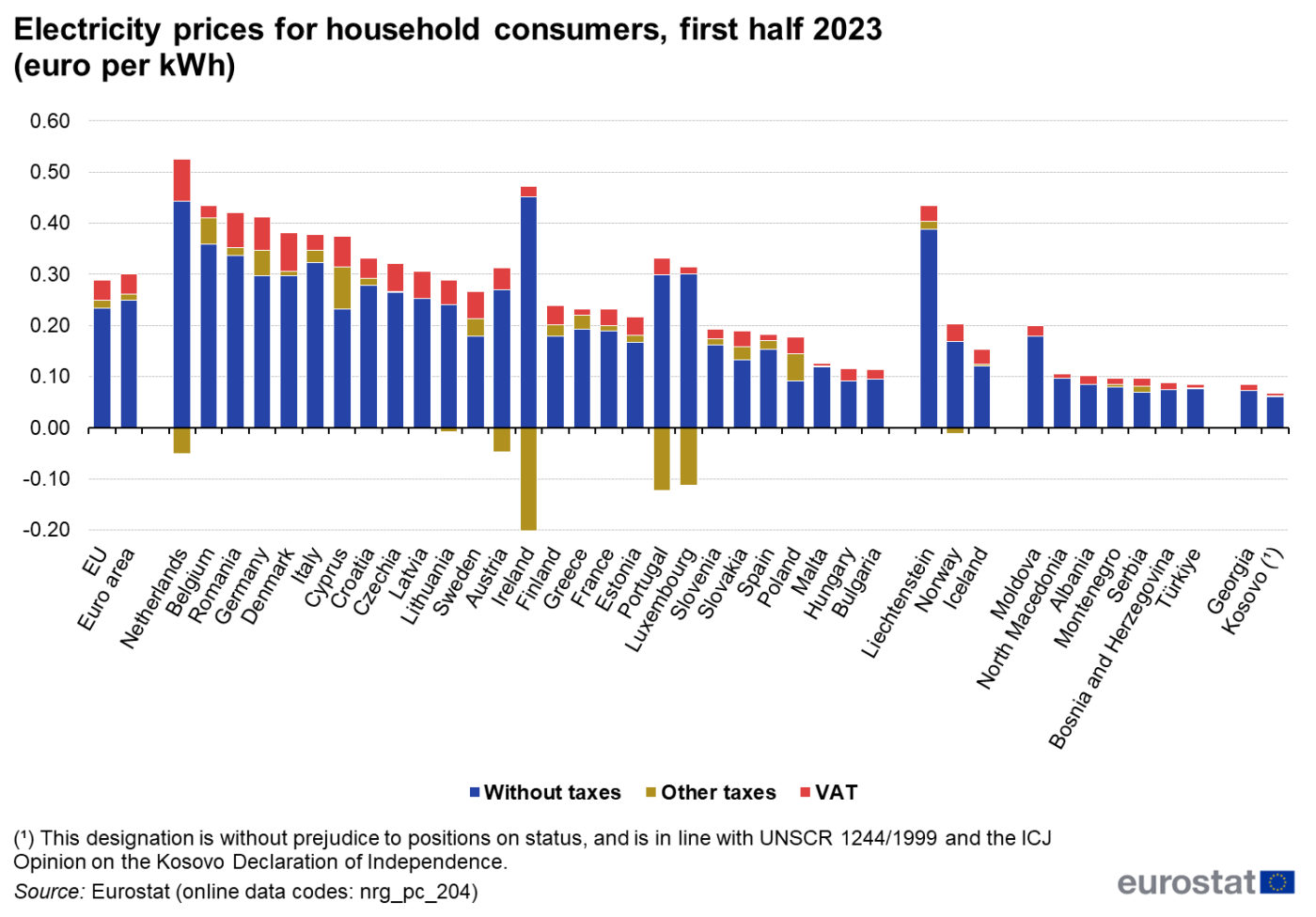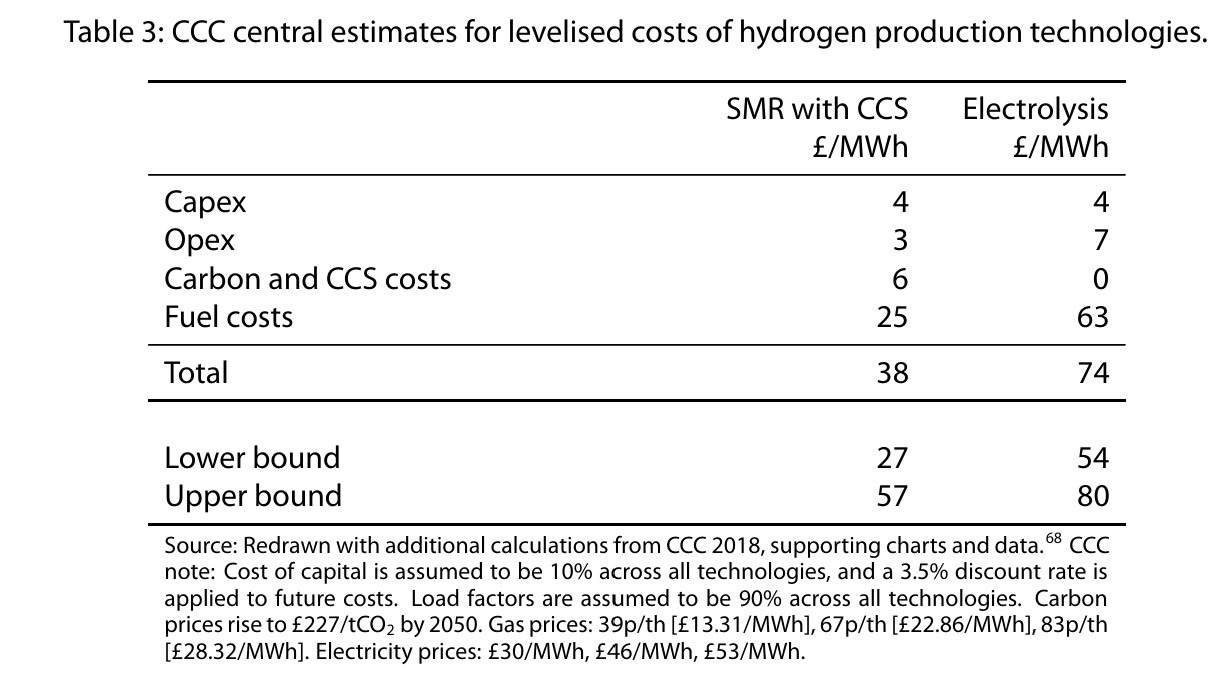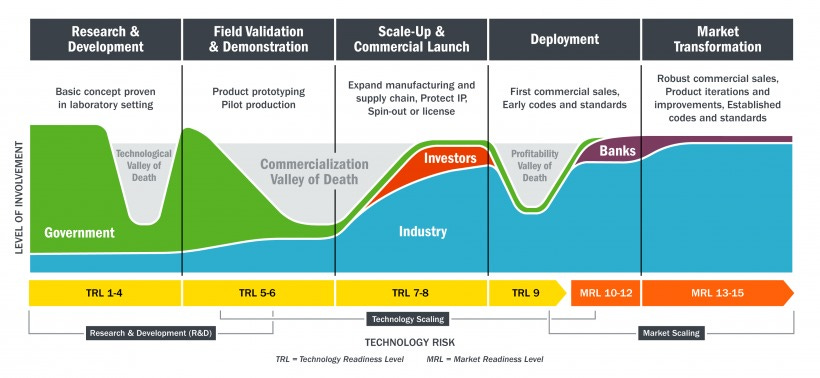What to do with the excess electricity generated by renewable energy?
Every few years within the energy sector, a new 'entrepreneur' emerges with a supposedly 'revolutionary' idea that often turns out to be nothing more than a repackaging of an old concept that failed to gain traction. The latest contender for this title is 'the hydrogen economy'.
My scepticism stems from the physical characteristics of hydrogen gas. While all technologies experience learning curves and adhere to an equivalence of Moore’s Law, which revolutionised the semiconductor industry, it is important to remember that ultimately, learning curves are constrained by the laws of physics. This is why internal combustion engines haven’t significantly improved in fuel efficiency in over 40 years, why the supersonic concorde was never economically viable and why certain sceptics argue that battery electrical vehicles might not see mass adaptation for the middle income groups.
One simply cannot squeeze blood out of a rock.
The S-curve, bound by physical constraints, explains why politicians cannot simply lower the price of electricity, and why decarbonization poses a significantly greater challenge than the environmental advocates typically recognize.
These are not “limits to growth”, they are rather limits to what a particular technology can achieve and why we should look elsewhere for innovation. It’s my belief that economic bubbles are likely to occur when investors fail to grasp that technologies eventually reach a plateau when their learning curves approach their physical limits.
Below, I'll explain why I doubt that hydrogen will be able to perform in the long run when compared to synthetic fossil fuels - that share the same physical properties as traditional fossil fuels. Synthetic fuels do require hydrogen production, with the advantage that hydrogen is consumed where it is produced. Therefore, all additional infrastructure adaptation and transportation challenges will be prevented.
If we are genuinely committed to effectively utilising the surplus power generated from renewable electricity sources, I believe one viable option is to invest in the creation of synthetic fuels to supplant traditional fossil fuels. While renewable energy boasts the advantage of having no associated fuel costs, its drawback lies in its high coefficient of variation , necessitating capacity overbuilding as is currently the case in Germany. Despite this overbuilt renewables have a second challenge, which is reliability during periods of no wind or no sun, known as Dunkelflaute. It is the reason why the Germans have not yet managed to shut down their fossil fuel plants, simply because they are necessary to firm the electricity supply.
The cost of running an idle system in parallel with a renewable based one might be the reason why the German household electricity prices are some of the highest in the world.
The recent drop in battery prices might change this equation, but it remains to be seen if it will be sustainable over the long term and if the renewable battery backup system on its own will prove to be reliable.
The question is, what do we do in the meantime with the excess energy that is currently dropping the wholesale price of electricity in europe to below zero, signifying little value for money during the summer period?
During periods of low demand, the surplus energy of renewable power can potentially be utilised to produce synthetic fuels that are suitable for niche transportation such as in mining, shipping, trucking or aviation.
Leveraging synthetic fuels will allow for the cost-effective substitution of traditional fossil fuels. The policy might even speak to the heart of the environmental activists, because it’s unlikely to increase carbon emissions significantly.
South Africa is set to be ideally placed to take advantage of this idea, because of SASOL’s long experience with the Fischer Tropsch Process. We should use it to our advantage for the development of Africa, because it is a technology that is well established, that we already understand.
The hydrogen economy in contrast is not going to be competitive. There is an old joke that 'hydrogen is the energy of the future, and always will be’.
Why hydrogen is noncompetitive as an energy carrier.
A hydrogen-based economy encounters substantial hurdles and is unlikely to rival a synthetic fossil fuel-based economy due to the inherent physical constraints of hydrogen.
Hydrogen’s weak volume density is an inherent physical constraint that is unlikely to be overcome.
Hydrogen, even in its most advanced state, competes with heat-pumps and methane gas for domestic heating, for battery electrical vehicles for short distance transportation and with grid-scale BESS and pumped hydro for storage.
It’s unlikely to make significant market penetration, given the lack of freshwater availability and the high losses required to produce hydrogen.
Although synthetic fuels, produced through the Fischer-Tropsch process, still require hydrogen and freshwater intake, the overall volume consumed is diminished.
Utilizing hydrogen in this traditional manner, where consumption aligns with production, proves simpler and more cost effective. Therefore, investing in hydrogen production holds merit.
Hydrogen produced from the excess and low value renewable electricity should immediately be processed.
To optimize its use, immediate blending of hydrogen with CO2 and subsequent refinement for fossil fuel production are necessary
.Using hydrogen outside of its traditional role as industrial feed-stock is going to be costly if safety standards are to be respected.
Synthetic Fuels are more feasible where they are applied.
Hydrogen from electrolysis is set to be cheaper than hydrogen derived from fossil fuels by the year 2030.
The physical properties of hydrogen.
The table below shows hydrogen’s physical properties. My argument against its competitiveness is primarily based on these characteristics. It’s an argument from first principles.
Energy per unit of mass
Hydrogen's primary advantage over natural gas (that is often cited by its proponents) lies in its energy per unit of mass, which is 3 x that of gasoline.
While this may seem appealing, it's important to recognize that energy density is just one factor that determines the competitiveness of an energy carrier.
Energy by Volume
Hydrogen has only ⅓ of the energy per volume in comparison with Liquified Natural Gas.
The graph below shows why fossil fuels are so competitive, because transportation takes place in volumes, not mass.
This means that a truck running on hydrogen would either travel one-third of the distance, or need to discard one-third of the cargo to achieve equivalent energy transport, if we assume that the fuel tank has the same capacity.
Furthermore, Hydrogen is unlikely to play a significant role in aviation, given its volume density constraints.
Low density and high reactivity
Due to its low density (1/10th of gas), hydrogen necessitates specialised transportation logistics. Hydrogen for example leaks through most metals and will require specialised alloys to control the leakage, increasing the cost of storage. Furthermore, hydrogen in the metal lattice degrades the mechanical properties of the metal, causing hydrogen embrittlement.
Hydrogen’s ignition temperature
With a low ignition temperature (1/10th that of gas), hydrogen is explosive.
Incidentally, hydrogen’s low ignition point is why the Zeppelins went out of business after the Hindenburg Disaster.
Filled with hydrogen, it caught fire and was destroyed during its attempt to dock with its mooring mast at Naval Air Station Lakehurst. The accident caused 35 fatalities (13 passengers and 22 crewmen) from the 97 people on board (36 passengers and 61 crewmen), and an additional fatality on the ground.
Hydrogen’s boiling point
With a low boiling point (90°C) below methane, it will require a lot more energy to keep it compressed in a liquid and safe state.
Hydrogen is a secondary greenhouse gas
Hydrogen is indeed a secondary greenhouse gas, and could contribute to global warming. If leakages are not controlled, it will have no benefit over the industries that it is tried to offset as a study from Oxford concluded in 2022.
“Nevertheless, any leakage of hydrogen will affect atmospheric composition (with implications for air quality) and have an indirect warming effect on climate, partially offsetting some of the climate benefits of the reduction in carbon dioxide.”
Hydrogen is not a primary energy source
Hydrogen serves as an energy carrier rather than a primary energy source, requiring production from other energy sources such as natural gas or renewable electricity.
The figure below shows the required energy.
A study by Mickael Coriat published in France24 in late 2022 highlighted the challenges of scaling up hydrogen production for aviation, illustrating that producing enough for an airport like Charles de Gaulle would require a substantial energy investment equivalent to 16 Nuclear Power Plants!
That is almost ¼ of France’s installed power capacity, just for one airport! The equivalent Wind Turbines would have to cover the size of one of France’s Departments (provinces)!
Coriat called the numbers “dizzling”.
Freshwater usage
Certain methods of hydrogen production require high freshwater usage. On average 9-10 litres of Freshwater for every gram of hydrogen. This should not even be an option for water scarce countries such as South Africa.
It’s worth pointing out that synthetic fuels also require hydrogen, but less per volume consume. Investment in desalination is probably to going to have to be required if mass adaptation is to take hold.
Hydrogen Splitting
High-temperature processes (750°C to 1000°C), such as high-temperature electrolysis, may be necessary for efficient hydrogen production even when using nuclear power, which can pose challenges for materials. Gas-Cooled Nuclear Reactors do not operate above 750°C, and will require additional energy, most likely in the form of electrolysis.
Competition for Storage
Hydrogen faces competition from various other energy storage technologies, including battery electric vehicles (BEVs), pumped storage, and others. Why make hydrogen if the prices of batteries for example have fallen?
Lack of Infrastructure
Hydrogen infrastructure may currently be less developed and more costly compared to traditional energy transmission systems.Transitioning to a hydrogen economy would require significant changes to existing infrastructure such as adapting the natural gas pipelines with more expensive alloys! As the hydrogen council admitted, there are only 4,500 km of hydrogen pipelines installed globally!
The United States alone has 5 million km of pipelines, this will not be a cheap replacement.
Hydrogen is simply expensive
Hydrogen technologies can be expensive compared to existing alternatives, which may hinder widespread adoption, especially in cost-sensitive markets. As the graph below shows the estimates for their levelised cost pales in comparison with carbon capture and storage.
Almost ⅔ of the fuel cost of hydrogen is simply in making the fuel!
Hydrogen is useful in optimizing the Fischer-Tropsch process, because by the end of this decade green hydrogen is set to become cheaper than grey hydrogen.
Technology Readiness
Some hydrogen technologies, such as fuel cells for transportation, still face technical challenges and limitations, including durability, efficiency, and cost, which may hinder their widespread adoption.
When broken down by sector, it’s clear that there is still significant development required.
Various phases of the technology are still at phase 5-6, meaning that they still require government assistance before investors will take them seriously.
Many ideas unfortunately die in the “commercialisation valley of death”.
Scepticism from prominent voices
Several prominent voices within the energy sector have expressed scepticism against the hydrogen bubble such as Michael Leibriech, Mark Jacobzon, Robert Bryce, John Constable, Mickael Coriat as well and many others.


















We are on the same page here.
https://mikealexander.substack.com/p/a-different-way-to-look-at-solar
I am always surprised that so many intelligent people support prescriptions like building a hydrogen economy, pumping water up hills, trying to replace thermo power with electrical energy, daming up thousands of acres of land, and consuming so much of the Earth’s mineral resources in efforts that run into the physical limitations you point out in this post. And why? Because so many people are singularly focused on CO2 emissions, which do not correlate to surface temperature of the planet because there are many other considerations like the sun and humidity. Maybe the silver lining, after wasting precious treasure and time, will be that we find common ground in the next densest source of fuel that, as a bonus, do not emit CO2, uranium and thorium. We will probably end up building gigawatt size nuclear plants all over the world, and small nuclear plants to service off grid applications like military bases, data centers, and industries that need to convert heat directly into work onsite. This energy “transition” we’re in, which isn’t really happening, will be looked back on like a couple of alchemists / astrology like 21st century decades that ended when nuclear fuel was adopted as society’s primary fuel, after 80 years experience with fission. Meanwhile this is interesting and relevant information on the challenges hydrogen production, storage and use introduce.